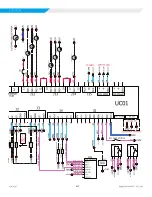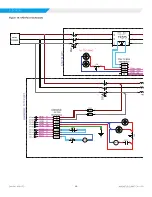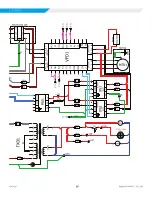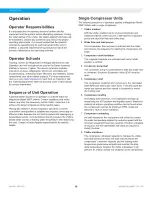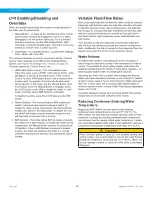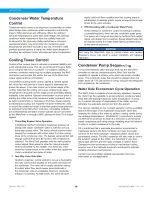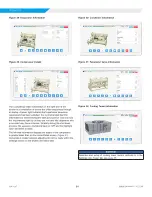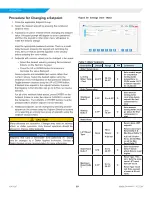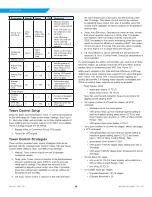
OPERATION
MAGNITUDE WMT CHILLER
DAIKIN APPLIED
26
Operation
Operator Responsibilities
It is important that the operator become familiar with the
equipment and the system before attempting operation. During
the initial startup of the chiller, the Daikin Applied technician will
be available to answer any questions and instruct the proper
operating procedures. It is recommended that the operator
maintain an operating log for each individual chiller unit. In
addition, a separate maintenance log should be kept of the
periodic maintenance and servicing activities.
Operator Schools
Training courses for Magnitude Centrifugal Maintenance and
Operation are held throughout the year at the Daikin Learning
Institute in Verona, Virginia. The school curriculum includes
instruction on basic refrigeration, MicroTech controllers and
troubleshooting, enhancing chiller efficiency and reliability, system
components, and other related subjects. For more information,
and click on Training or call
the Training Department. Refer to the back cover of this manual
for contact information.
Sequence of Unit Operation
A general chiller sequence of operation is outlined below for
Magnitude Model WMT chillers. Certain conditions and chiller
alarms may alter the sequence, but the chiller’s objective is to
achieve the target temperature of the leaving water.
Placing two chillers in series evaporator operation or series-
counterflow configuration is possible and requires connecting an
Ethernet cable between the unit control panels and reassigning a
temperature sensor. Communication directly between the chillers
allows better control of leaving water temperature while balancing
the load. Contact a Daikin Applied representative for specific
details .
Single Compressor Units
The following sequence of operation applies to Magnitude Model
WMT chillers with a single compressor.
1 .
Chiller enabled
With the chiller enabled via its on-board interlocks and
selected external control source, it will start the evaporator
pump and check for flow and chiller load.
2 .
Water flow and load proven
Once evaporator flow has been confirmed and the chiller
load proven, the sequence for starting the compressor will
begin.
3 .
Compressor shaft levitation
The magnetic bearings are activated and correct shaft
position is verified.
4 .
Condenser pump start
The condenser pump is commanded to start and water flow
is confirmed. Electronic Expansion Valve (EXV) must be
open
5 .
Compressor start
The compressor is started and comes up to the calculated
Start RPM and Inlet Guide Vane (IGV). From this point the
vanes are opened and then speed is increased to match
the cooling load.
6 .
Compressor loading
As building load increases, the compressor will load up
maximizing the IGV position and impeller speed. Maximum
capacity at a given operating condition can be found when
the compressor reaches its Maximum RPM, maximum
allowed % RLA or power limitation.
7 .
Compressor unloading
As load decreases, the compressor will unload to sustain
the water temperature setpoint by reducing speed until the
minimum speed limit has been reached. If further unloading
is required, the IGV assemblies will close as required to
satisfy the load.
8 .
Chiller shutdown
The compressor will adjust capacity to manage the chiller
load and will shut off when the load reduces below the
compressor’s minimum capacity and the leaving water
temperature goes below setpoint and reaches the stop
delta temperature. Anytime the chiller is disabled, it will
perform an orderly unload and shutdown of the compressor.






